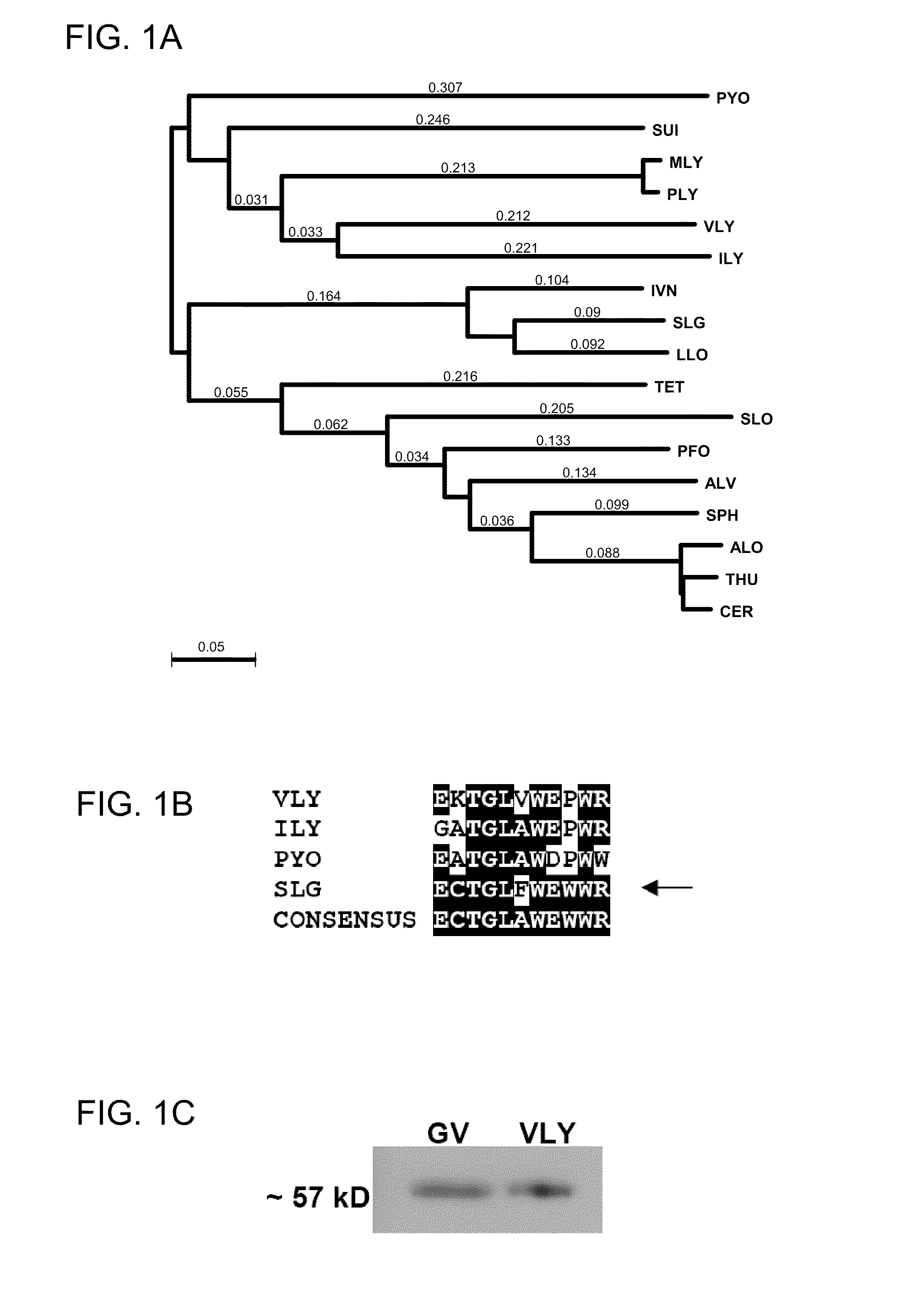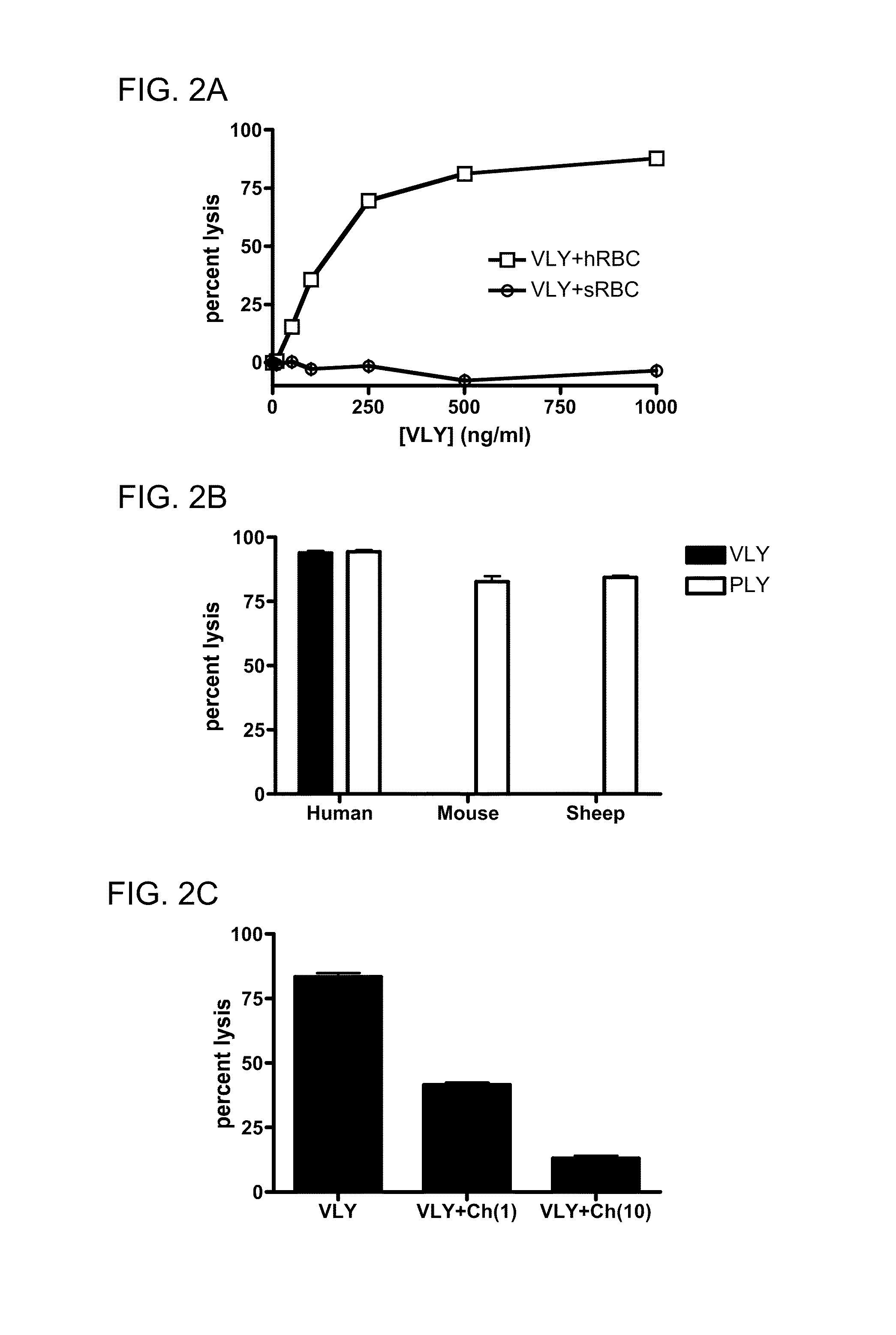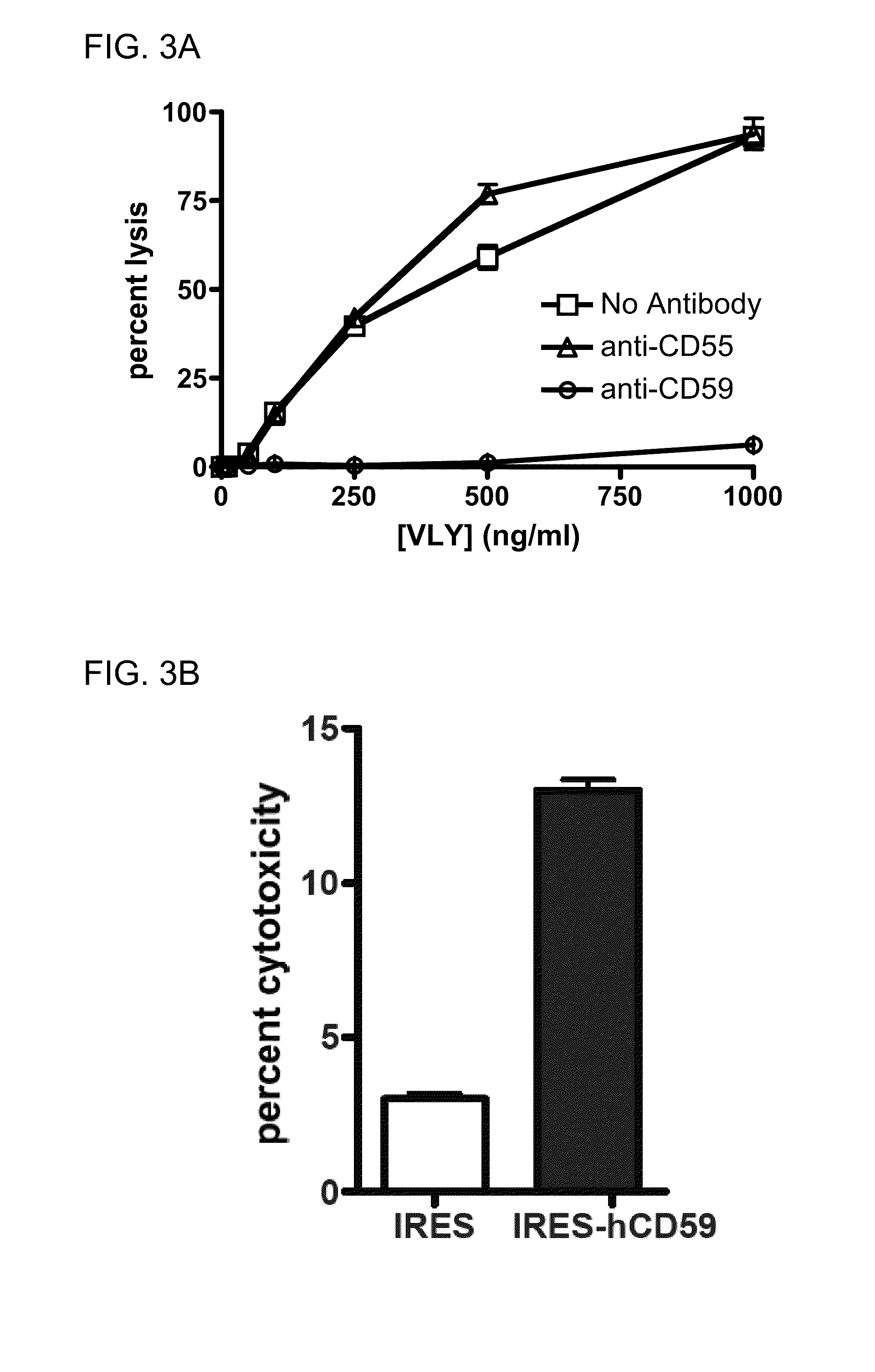Treatment and prevention of Gardnerella vaginalis infections
a technology for gardnerella vaginalis and infection, applied in the field of treatment and prevention of gardnerella vaginalis infections, can solve the problems of difficult to ascertain the true prevalence of bv, limited mechanistic studies of bv and its adverse effects, and often underutilized by practitioners
- Summary
- Abstract
- Description
- Claims
- Application Information
AI Technical Summary
Benefits of technology
Problems solved by technology
Method used
Image
Examples
example 1
Materials and Methods
Bacterial Strains and Cell Lines
[0153]Gardnerella vaginalis strains 14018, 14019, and 49145 were obtained from ATCC. ARG3 is a clinical isolate of G. vaginalis kindly provided by Susan Whittier. Cells were grown in brain-heart infusion supplemented with 5% fetal bovine serum, 0.3% Tween 80, and 0.1% soluble starch or in 10% fetal bovine serum (HyClone), 5% Fildes enrichment (Remel) and 4 ng / ml of amphotericin. There are many efficient ways to culture Gardnerella vaginalis known in the art. Cultures were typically incubated at 37° C. and 5% CO2. E. coli strains TOP10 and BL21AI (Invitrogen) were grown in LB, with kanamycin (30 μg / ml) selection as appropriate. HeLa cells were grown at 37° C. / 5% CO2 in MEM supplemented with 10% fetal bovine serum and 10 μg / ml ciprofloxacin. CHO-K1 cells (CCL-61) were grown at 37° C. / 5% CO2 in F12 Kaighn's Modification (Invitrogen) with 10% FBS and 10 μg / ml ciprofloxacin.
[0154]Human cervical endothelial cells (HeLa, ATCC CCL-2) were...
example 2
Domain 4 of VLY Plays a Role in Species Specificity
[0173]Consistent with these findings, the hCD59 binding site has been localized to this domain for ILY (22) and for VLY (FIG. 8 renumber). Using overlap-extension PCR, we generated a toxin chimera, containing domains 1-3 of VLY and domain 4 of PLY, a species non-selective CDC (FIG. 8A). Unlike the parent VLY, the chimera lysed human and non-human erythrocytes with equal efficacy (FIG. 8B), and does not require hCD59 for CHO cell lysis (FIG. 8C). This indicates that D4 plays a major role in species-selectivity among the CDCs. In order to generate a probe for toxin-hCD59 interactions, we created a GFP:VLYD4 fusion protein (FIG. 8D). This protein binds to hCD59-expressing human epithelial cells but does not form pores (FIG. 8E). Thus, this protein will be an invaluable tool for studies delineating requirements for binding between D4 and hCD59.
PUM
| Property | Measurement | Unit |
|---|---|---|
| molecular mass | aaaaa | aaaaa |
| time | aaaaa | aaaaa |
| concentration | aaaaa | aaaaa |
Abstract
Description
Claims
Application Information
 Login to View More
Login to View More - R&D
- Intellectual Property
- Life Sciences
- Materials
- Tech Scout
- Unparalleled Data Quality
- Higher Quality Content
- 60% Fewer Hallucinations
Browse by: Latest US Patents, China's latest patents, Technical Efficacy Thesaurus, Application Domain, Technology Topic, Popular Technical Reports.
© 2025 PatSnap. All rights reserved.Legal|Privacy policy|Modern Slavery Act Transparency Statement|Sitemap|About US| Contact US: help@patsnap.com



